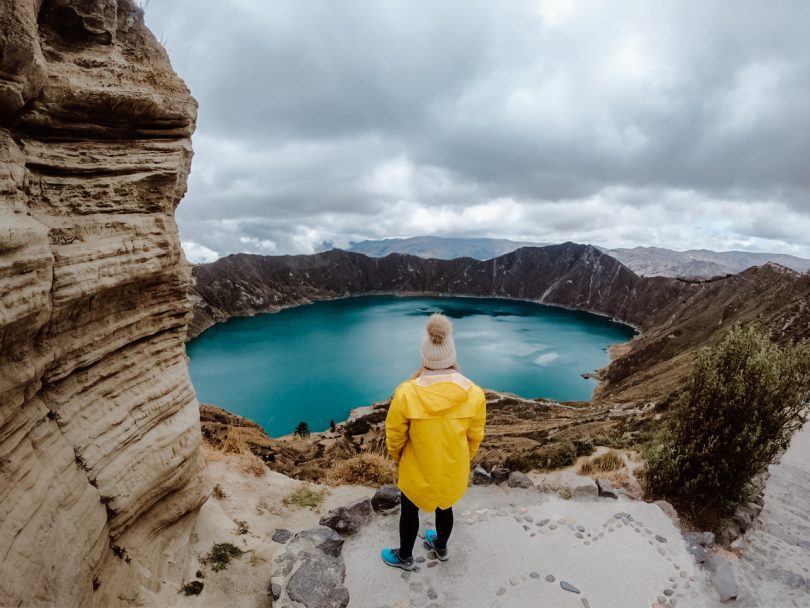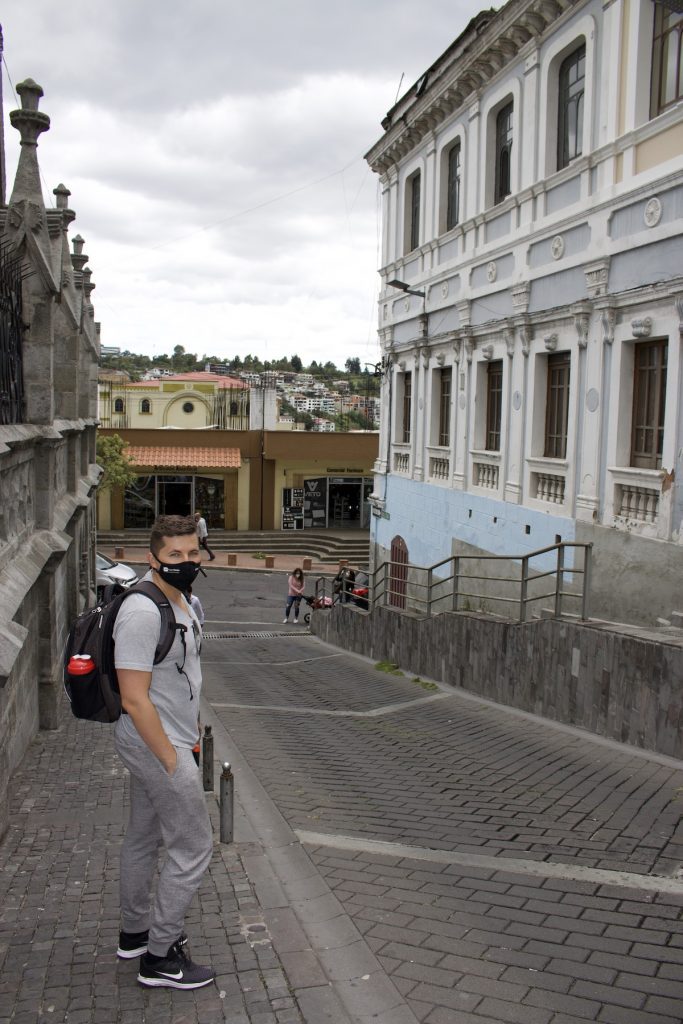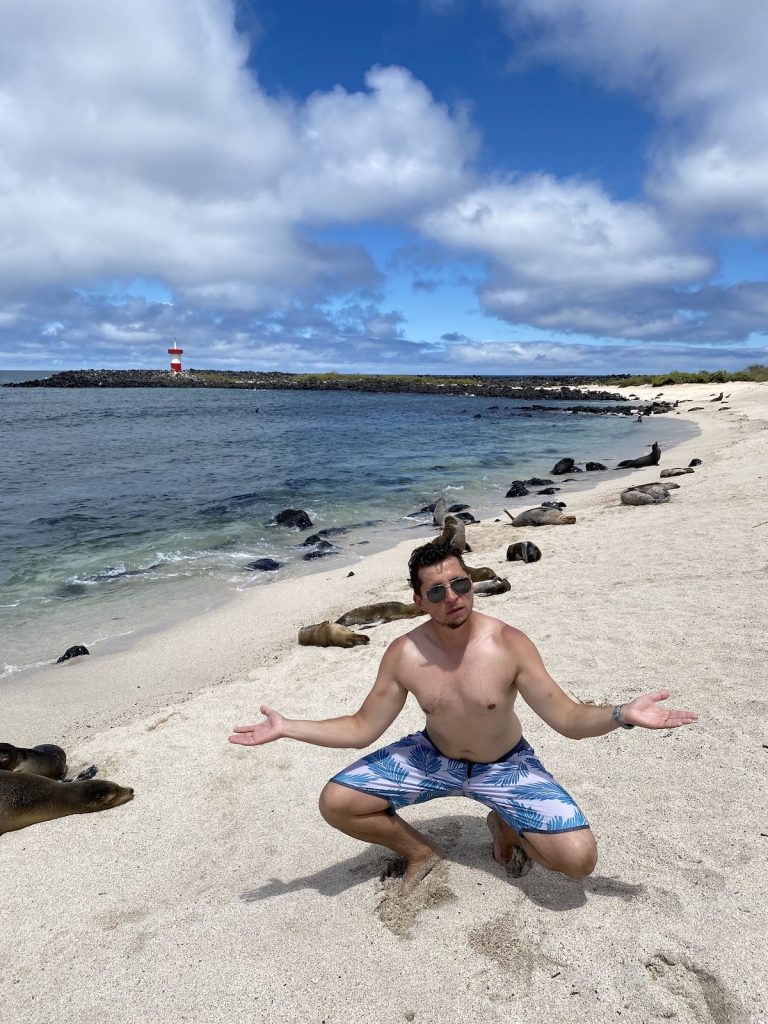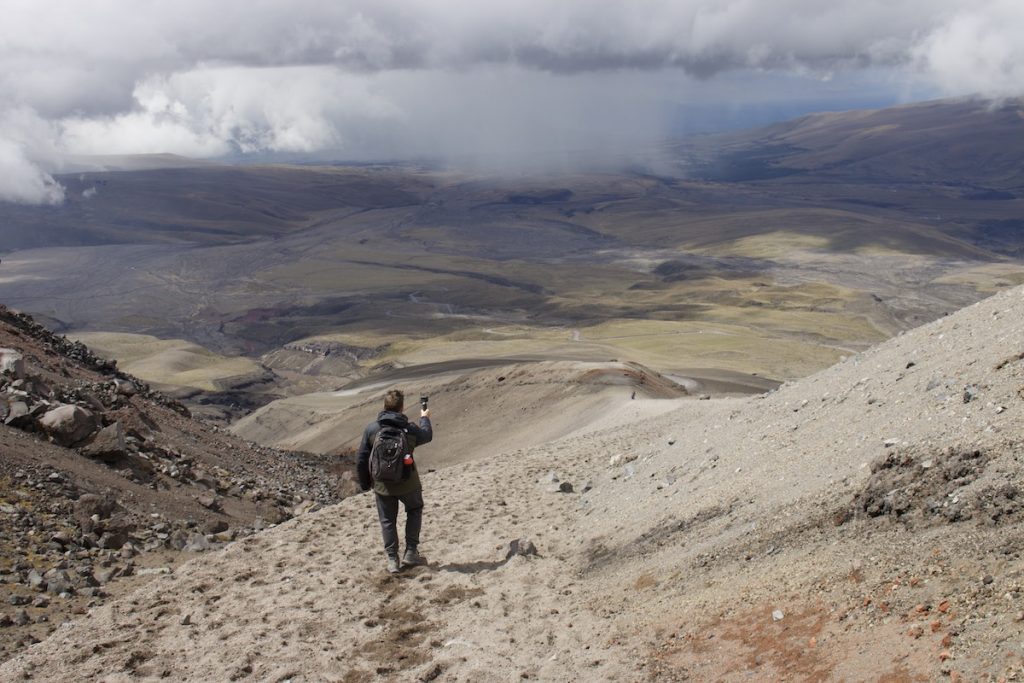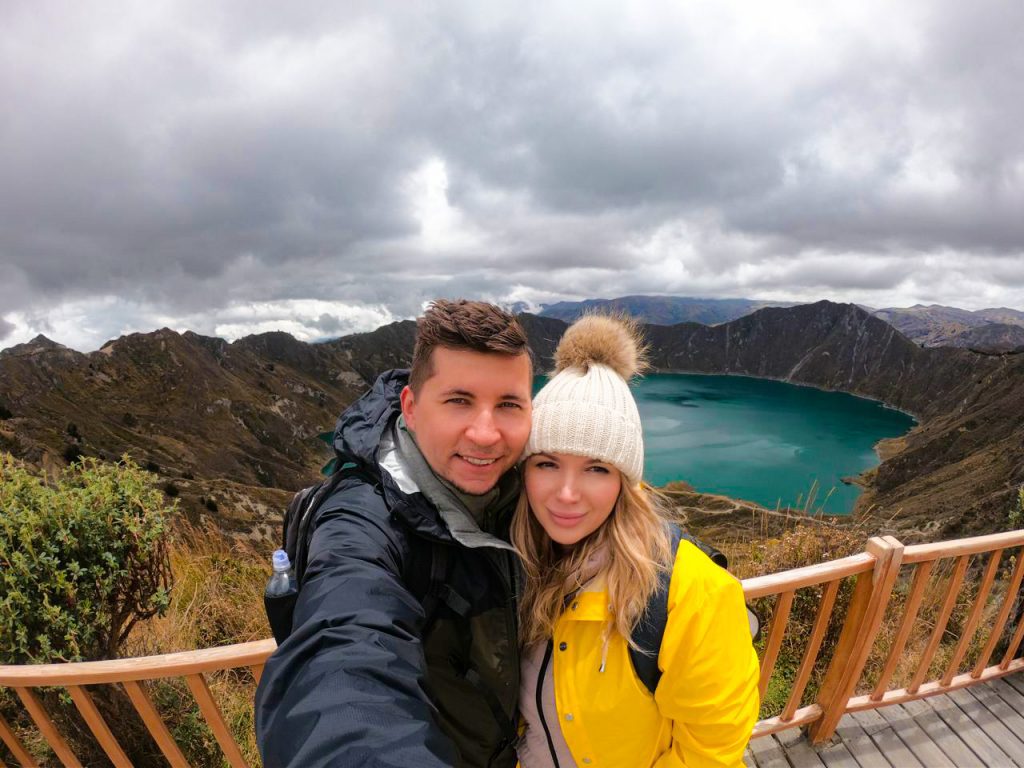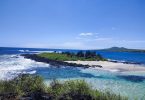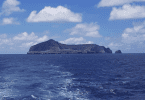Packing for a trip can make or break the experience, and after our journey to Ecuador and the Galapagos Islands, we learned just how important it is to get it right. From the highlands of mainland Ecuador to the crystal-clear waters of the Galapagos, each region demands a little extra thought when preparing.
I remember sorting through our gear the night before we left, making sure we had everything for the adventure ahead. Ecuador’s mainland, with its ever-changing altitudes and the steamy Amazon, needed a different set of essentials compared to the Galapagos, where we knew we’d spend much of our time in and around the water. The dry and wet seasons can throw in a curveball if you’re not prepared, so having a mix of lightweight and waterproof clothing was key.
So, based on our experiences and a few lessons learned along the way, we put together a packing list to make your time in Ecuador and the Galapagos as smooth and enjoyable as possible.
Medicines
Using a travel pill case was one of the smartest moves we made for our trip. It kept everything organized and easy to access, especially on days when we were rushing to catch a tour or hike. I could just grab the case from my bag, and we’d be set for the day without digging around for different bottles or blister packs. It’s a simple but effective way to stay organized on the go.
Here’s a list of some must-have medications we recommend bringing for your trip to Ecuador, based on our own experience. These basics can help you handle anything from motion sickness on a boat ride to minor aches after a long hike.
Chlorophyll
Chlorophyll became an essential part of our prep for acclimating to Ecuador’s high altitudes. Before we left, we stocked up on it from a local health food store in liquid form. Whether you prefer pills, tablets, or powder, it’s widely available and can really help ease the transition to those higher elevations.
We started taking ChlorOxygen about a week before our trip, and I have to say, it made a big difference for us. Altitude-related discomfort can really sneak up on you, especially in places like Quito, Quilotoa Lake, or Cotopaxi National Park. But with this natural supplement in our routine, our bodies seemed to handle the lower oxygen levels more smoothly. If you’re planning to visit any high-altitude areas in Ecuador, we definitely recommend adding it to your list—it made our time there much more enjoyable.
Motion Sickness Bracelets or Pills
Motion sickness bracelets or pills can truly be a game changer, especially if you’re traveling between the Galapagos Islands by boat. Some of those inter-island rides can get pretty choppy, and we saw firsthand how rough it could be for others.
We came prepared with motion sickness bracelets and pills, and they really saved us from feeling queasy. While others were battling nausea and struggling to keep their balance, we were able to relax and enjoy the ride. If you’re planning to hop between the islands, I can’t recommend these enough—they made our boat trips far more comfortable.
Anti-diarrheal
Bringing anti-diarrheal medicine is something we highly recommend when traveling to Ecuador and the Galapagos Islands. You just never know when traveler’s diarrhea might strike, and it’s better to be safe than sorry.
The changes in water, new foods, and different bacteria can sometimes be a bit too much for the digestive system, and dealing with that while on an adventure can quickly put a damper on things. Having those medicines handy gave us peace of mind, and thankfully we didn’t need them, but it’s always good to be prepared just in case!
Water Bottle with Filter
Bringing a water bottle with a built-in filter turned out to be one of the smartest decisions we made for our trip to Ecuador and the Galapagos Islands. Access to clean drinking water can sometimes be tricky, especially in more remote areas or during outdoor adventures. The tap water in both the Galapagos and mainland Ecuador isn’t safe to drink, so having our filtered bottle gave us peace of mind.
Not only did it allow us to refill from various water sources without worrying about contaminants, but it also helped reduce plastic waste. Instead of constantly buying single-use water bottles, we could just top up and go. It was a small effort that made a big difference for both our health and the environment.
Mini First Aid Box
Packing a mini first aid box is something we never leave out on any trip, and it proved especially useful in Ecuador. With so many high-altitude hikes and outdoor activities on our itinerary, we wanted to be prepared for any minor injuries or health issues that might come up along the way.
Our kit was well-stocked with the basics—adhesive bandages, antiseptic wipes, gauze pads, adhesive tape, tweezers, scissors, and pain relievers—which came in handy more than once. A small cut from a rocky trail or a mild headache from the altitude were quickly taken care of, allowing us to keep going without any hiccups.
We also made sure to bring our personal medications, including over-the-counter remedies for things like headaches, allergies, and upset stomachs. Trust me, being prepared for the unexpected made our trip so much smoother. Plus, we carried our essential medical information, emergency contacts, and health insurance details just to stay on the safe side.
Vitamins
Vitamins can be a great way to support your immune system, boost energy, and fill in any nutritional gaps that come up while traveling. We always try to maintain a balanced diet on our trips, but between the new and unfamiliar food choices and the long days of exploring, it can sometimes be tough to get everything we need from meals alone.
Before our trip to Ecuador, we consulted with a doctor to figure out what vitamins would be most helpful and to make sure we were following any import regulations. Having that extra boost made a difference, especially during those long hikes and boat rides. It’s a small step that can go a long way toward feeling your best while on the road.
Ibuprofen/Acetaminophen/Aspirin
Ibuprofen, Acetaminophen, and Aspirin are must-haves for any travel kit. These over-the-counter pain relievers really came in handy for us during our trip, helping to ease common discomforts like headaches after a long day or muscle aches from hiking at high altitudes.
Whether it’s a minor pain, inflammation, or even a fever, having these on hand provided quick relief and kept us going without needing to search for a pharmacy in unfamiliar places. Packing them ahead of time gave us peace of mind, knowing we were prepared for any unexpected aches and pains along the way.
Sleep Aid Medicine
Sleep aid medicine can be a real lifesaver, especially when adjusting to new time zones or unfamiliar sleeping environments in Ecuador and the Galapagos Islands. With the excitement of exploring and the different surroundings, getting a good night’s rest wasn’t always easy for us. Having a sleep aid handy helped us relax and adjust, ensuring we were well-rested for the next day’s adventures.
Whether it’s a natural supplement like melatonin or an over-the-counter option, it’s worth considering packing something to help you catch some restful sleep during your travels.
Bandaids
Band-aids are definitely a must when packing your first-aid kit for Ecuador and the Galapagos Islands. With all the outdoor activities and hikes we did, they came in handy more than once. Whether it was a small cut from a rocky trail or blisters from a long day of walking, those simple adhesive strips were a convenient and quick fix to keep us going. It’s one of those things you don’t think much about until you need it, and we were glad we had plenty on hand during our trip.
Safety and Personal Protection
Mainland Ecuador, especially in larger cities, does have a reputation for higher crime rates, so we took extra precautions to protect ourselves and our belongings. Simple steps like keeping our valuables close, avoiding poorly lit areas at night, and staying aware of our surroundings made us feel more secure as we explored.
However, if your itinerary focuses only on the Galapagos Islands, you can relax a bit more. The Galapagos is truly one of the safest places we’ve ever been. The serene environment and low crime rates allowed us to enjoy our time there without worrying too much about safety.
Below are some essential items we brought along for our Ecuadorian trip, along with a few safety tips that helped us have a secure and worry-free experience.
Anti-theft bag or Cross Body Purse
Bringing an anti-theft bag or a cross-body purse was one of the best decisions we made for traveling through Ecuador, especially in the bigger cities where pickpocketing can be an issue. These bags come with added security features like slash-resistant materials, hidden zippers, and secure locking mechanisms, all of which made us feel a lot more at ease while navigating busy areas.
Wearing a cross-body bag kept our valuables close and out of reach of potential thieves, and having that peace of mind allowed us to focus on enjoying our trip instead of constantly worrying about our belongings. If you’re heading to Ecuador, this small investment is definitely worth it.
Travel belt
Using a travel belt was a game changer for me when visiting Ecuador, especially since it’s such a cash-focused country. I kept all my cash securely tucked away in the belt, hidden and close to my body, which gave me a lot of peace of mind as we moved through the bustling streets and markets.
It’s a discreet and practical way to carry money, and it made navigating busy areas feel much safer. With the travel belt, I didn’t have to worry about theft or misplacing my cash, allowing me to fully enjoy the experience without constantly checking my pockets or bag. It’s an essential item if you’re planning a trip to Ecuador.
Door Stop Alarm
Using door-stop alarms turned out to be a smart safety measure during our trip to Ecuador, especially in Airbnb or less-secured accommodations. While I was lucky not to need it in our room, there was one night when I heard someone attempting to break into the building through the outside door. Without hesitation, I activated the door-stop alarm, and the piercing sound quickly scared the intruder away.
These compact devices are so simple yet incredibly effective, and having one with us gave an extra layer of security wherever we stayed. If you’re looking for peace of mind, especially in unfamiliar places, I highly recommend bringing one along.
Portable Travel Safe
Bringing a portable travel safe is something we found extremely useful, especially when staying in places without a built-in safe. It’s compact yet secure, and gave us a reliable spot to store our valuables, like cash, electronics, and important documents, while we were out exploring Ecuador.
Having this safe with us meant we could fully enjoy our adventures without constantly worrying about the security of our belongings back at the accommodation. It’s definitely a practical investment, providing that extra layer of protection and peace of mind throughout the trip.
Get VPN on your laptop and phone.
During my trip, I had an interesting chat with the guy who sold me SIM cards. He warned me about the risks of connecting to public or even private Ecuadorian routers, as hackers often try to access personal information. That conversation made me really glad we were using a VPN.
A VPN not only encrypts your internet connection, keeping your data safe from prying eyes, but it also allowed us to access Netflix from back home, which was perfect for unwinding during downtime. I’ve been using Surfshark VPN for years—it’s affordable, reliable, and works great for keeping your information secure while traveling.
Luggage Locks
Whether you’re staying at hotels, using airport baggage services, or leaving your luggage unattended for a short time, luggage locks are a simple yet effective way to deter unauthorized access and theft. We always use durable, TSA-approved locks on our bags, and it gives us peace of mind knowing our belongings are a little more secure. Plus, having TSA-approved locks means you avoid any hassles with airport security if they need to inspect your bags. It’s a small but essential step for stress-free travel.
Pocket Knife
Bringing a pocket knife can be incredibly useful when traveling to Ecuador and the Galapagos Islands. It’s compact, versatile, and came in handy for us on more than one occasion—whether it was cutting fruit during a hike or opening up packaging while out on the trail. Just make sure to pack it in your checked luggage to avoid any issues at airport security. Having a small tool like that can make a big difference, especially when you’re out exploring remote areas where resources might not be easily accessible.
Protection Against Insects and Sun
Mosquito Repellent
Packing a strong mosquito repellent is an absolute must when traveling to Ecuador, especially if you plan to visit the Amazon regions. The risk of mosquito-borne illnesses, such as dengue or malaria, is real in these areas, so protecting yourself from bites is crucial.
We made sure to apply repellent religiously, and it really helped us avoid those pesky bites while trekking through the rainforest. A good repellent not only keeps the mosquitoes at bay but also allows you to focus on enjoying the experience rather than constantly swatting at bugs. It’s definitely an essential item for your Ecuador packing list!
Sunscreen
When traveling to the Galapagos Islands, using reef-friendly sunscreen is vital for protecting the delicate marine ecosystem. Opting for a sunscreen labeled “reef-friendly” or “ocean-safe” ensures that its ingredients are less harmful to coral reefs and marine life. With all the snorkeling and water activities, it felt good knowing we weren’t contributing to any damage.
On the mainland of Ecuador, especially in high-altitude regions, the sun can be surprisingly intense. We learned the hard way how crucial it is to pack a high-SPF sunscreen. Be sure to choose a broad-spectrum sunscreen to protect against both UVA and UVB rays. This not only keeps your skin safe but also helps you enjoy your adventures without worrying about painful sunburns.
Clothing & Footwear
To help you understand what clothing to bring, we have listed all the clothes we packed during our Ecuador trip.
- Rain Jacket Essential for high altitudes and unpredictable weather, opt for a Gore-Tex rain jacket.
- Gore-Tex Hiking Shoes: Provide comfort and protection for various terrains and weather conditions.
- Warm Hat and Gloves: Prepare for chilly temperatures, especially on volcano summits.
- Pants: Pack both casual and hiking pants for versatility.
- Shorts: Ideal for warmer climates and leisure activities.
- Short/Long-Sleeved Shirts: Pack a mix of short and long-sleeved shirts for layering and adapting to changing temperatures.
- Underwear and Sports Bra.
- Sun Hat with Brim: Shield yourself from the strong Ecuadorian sun.
- Jacket, Sweater, Windbreaker: Layering options for variable weather conditions.
- Belt.
- Swimming Suits/Shorts: Enjoy beach days or water activities.
- Casual Sneakers: Comfortable footwear for exploring towns and cities.
- Flip Flops: Perfect for relaxing and beach outings.
Electronics
- Portable Chargers: Keep your electronic devices powered up on the go.
- Ecuador Power Adapter: Ensure compatibility with the local electrical outlets. The power plug sockets in Ecuador are type A and B. The standard voltage in the country is 120 volts, with a frequency of 60 Hz.
- All Chargers: Bring chargers for all your electronic devices (phones, cameras, etc.).
- Underwater Camera: A must-have for capturing unforgettable moments in the Galapagos Islands. I highly recommend getting a GoPro or try a cheaper camera but it’s a must-have to pack for your memories!
Miscellaneous
- Mask defog: Prevent fogging of your snorkel or dive mask for clear underwater vision.
- Dry Bag: Keep your belongings safe and dry during water activities or rainy conditions.
- Underwater Camera or Waterproof Phone Case: Capture incredible underwater moments in the Galapagos Islands.
- Snorkeling Kit: Bring your own snorkeling gear if you prefer to ensure comfort and familiarity.
- Travel Towel: Lightweight and quick-drying, ideal for beach visits and water adventures.
- Download Spanish Translator on Google Translate: Have a handy language tool to aid communication during your trip.
What Not To Bring to Galapagos & Ecuador
Restricted Items in Galapagos
High-Heel Boots
Ecuador is definitely not the place for high-heel boots. With its diverse and often uneven terrain, including cobblestone streets and rugged trails, comfortable and sturdy footwear is a must. Hiking shoes or sneakers are far more practical for navigating both the cities and the beautiful natural landscapes. You’ll thank yourself for choosing comfort over fashion as you explore everything from the high-altitude towns to the Amazon jungle.
Expensive Jewelry or Luxury Items
It’s wise to leave expensive jewelry or luxury items at home when traveling to Ecuador. Displaying valuable possessions can attract unwanted attention and increase the risk of theft, especially in busy urban areas. Prioritizing safety by wearing minimal or inconspicuous accessories will help you enjoy your trip with peace of mind, allowing you to focus on the experience rather than worrying about your belongings.
Winter Clothing
Ecuador’s climate varies greatly by region, but generally, heavy winter clothing isn’t necessary. The country mostly experiences mild to moderate temperatures, even in the higher altitudes. Instead of packing bulky winter wear, focus on bringing layers and versatile clothing. This allows you to easily adjust to the changing weather conditions, whether you’re in the highlands, Amazon, or coastal areas. Layers will keep you comfortable and prepared without taking up too much space in your luggage.
Conclusion
Packing wisely is key to having a smooth and enjoyable trip to Ecuador and the Galapagos Islands. Each destination comes with its own unique geographical features, diverse climates, and specific restrictions that require thoughtful preparation. By considering these factors when packing, you’ll ensure that you have all the travel essentials you need.
Smart packing helps you stay comfortable, safe, and ready for whatever the adventure brings. Whether you’re hiking through the Andes, exploring the Amazon, or snorkeling in the Galapagos, being prepared will allow you to fully enjoy the wonders of these incredible destinations.

